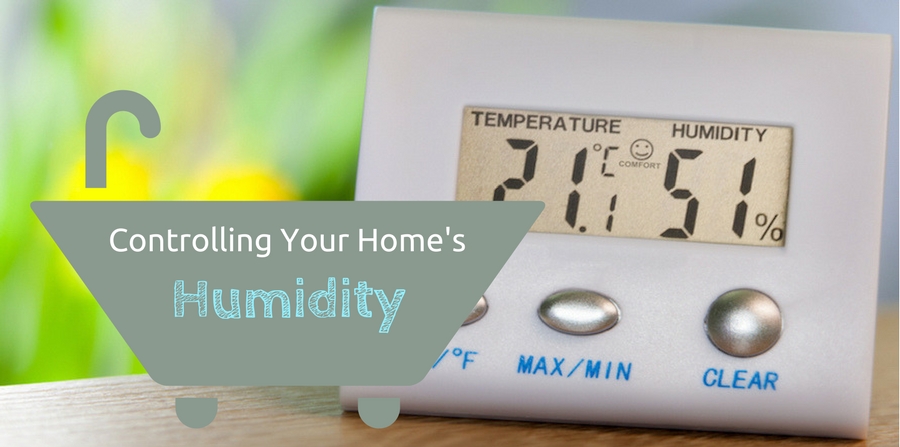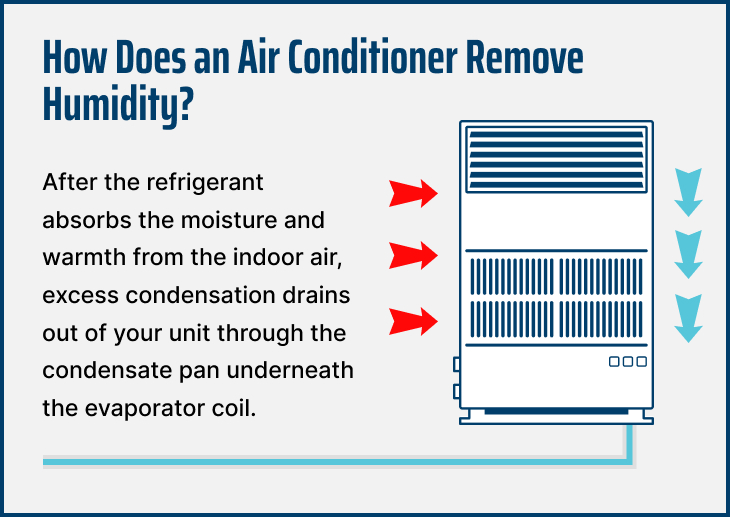How Do You Control Humidity In Your Home

Frequently Asked Questions: Controlling Humidity in Your Home
Maintaining the right humidity level is crucial for the comfort and health of your home and its occupants. Too much or too little humidity can lead to various problems, from mold growth to dry skin. This FAQ addresses common questions about controlling humidity to help you create a healthier and more comfortable living environment.
Question 1: Why is controlling humidity important in my home?
Controlling humidity is important for several key reasons:
- Health: High humidity promotes the growth of mold, mildew, and dust mites, all of which can trigger allergies and respiratory problems like asthma. Low humidity can dry out your skin, sinuses, and throat, making you more susceptible to colds and infections.
- Comfort: High humidity makes you feel hotter, stickier, and more uncomfortable, even at moderate temperatures. Low humidity can cause static electricity and itchy skin.
- Preservation of Your Home: Excessive humidity can damage wood furniture, floors, walls, and even the structural integrity of your house. It can lead to rot, warping, and pest infestations. Low humidity can cause wood to crack and furniture joints to loosen.
- Energy Efficiency: Controlling humidity can improve the efficiency of your heating and cooling systems. Dry air feels cooler, allowing you to set your thermostat higher in the summer. Humid air feels warmer, allowing you to set it lower in the winter.
Question 2: What is the ideal humidity level for a home?
The ideal relative humidity level for a home is generally between 30% and 50%. This range provides a balance between preventing mold growth and avoiding excessive dryness. During the winter, you might aim for the lower end of the range (30-40%) to minimize condensation on windows. During the summer, 40-50% is generally recommended. The best way to know your humidity levels is with a hygrometer, which is an inexpensive device used to measure humidity. Many smart thermostats will display the current humidity.
Question 3: How can I increase humidity in my home?
If the air in your home is too dry, especially during the winter months, here are several ways to increase humidity:
- Use a Humidifier: This is the most effective way to add moisture to the air. There are several types of humidifiers, including central humidifiers that attach to your HVAC system, portable humidifiers for individual rooms, and evaporative coolers. Choose the type that best suits your needs and the size of your space. Regular cleaning of your humidifier is crucial to prevent the growth of mold and bacteria, which can then be released into the air.
- Boil Water: Boiling water on the stove or leaving a pot of hot water to simmer (under supervision, of course!) can release steam into the air.
- Take Hot Showers or Baths: Leave the bathroom door open after a hot shower or bath to allow the steam to circulate throughout the house.
- Air-Dry Clothes: Instead of using a dryer, hang your clothes to dry indoors. The evaporating water will increase humidity.
- Houseplants: Plants release moisture into the air through transpiration. Adding more houseplants to your home can help increase humidity levels.
- Aquariums: Aquariums also release moisture into the air as the water evaporates.
Question 4: How can I decrease humidity in my home?
If the air in your home is too humid, especially during the summer months, here are several ways to decrease humidity:
- Use a Dehumidifier: This is the most effective way to remove moisture from the air. Choose a dehumidifier that is appropriately sized for the space you want to dehumidify. Regularly empty the water collection tank.
- Use Air Conditioning: Air conditioners remove moisture from the air as they cool it. Central air conditioning systems are the most effective, but window units can also help.
- Improve Ventilation: Ensure proper ventilation in areas prone to moisture buildup, such as bathrooms and kitchens. Use exhaust fans when showering, cooking, or washing dishes. Open windows when the weather permits to allow fresh air to circulate.
- Fix Leaks: Repair any leaks in your plumbing or roof promptly. Even small leaks can contribute to significant moisture buildup.
- Cover Soil in Potted Plants: Covering the soil with gravel or decorative stones can reduce the amount of moisture that evaporates into the air.
- Dry Clothes Outdoors: Avoid drying clothes indoors, especially in humid weather.
- Ensure Proper Drainage: Make sure your gutters and downspouts are functioning properly to direct water away from your foundation.
- Insulate Pipes: Cold water pipes can condensate, increasing humidity. Wrap them with insulation to prevent this.
Question 5: What are some signs that my home has high humidity?
Here are some common signs that your home might have excessive humidity:
- Condensation on Windows and Mirrors: This is a clear indicator of high humidity levels.
- Mold or Mildew Growth: Look for mold or mildew on walls, ceilings, floors, and in bathrooms and kitchens. A musty odor is also a sign.
- Water Stains: Water stains on walls or ceilings can indicate leaks and high humidity.
- Warped Wood: High humidity can cause wood floors, doors, and furniture to warp or swell.
- Peeling Paint or Wallpaper: Excessive moisture can cause paint to peel and wallpaper to loosen.
- Musty Odors: A persistent musty odor, especially in basements or bathrooms, often indicates mold growth due to high humidity.
- Increased Allergy Symptoms: If you notice an increase in allergy symptoms, such as sneezing, coughing, or itchy eyes, it could be due to mold or dust mites thriving in a humid environment.
- Feeling Clammy or Sticky: A persistent feeling of dampness or stickiness in the air, even when the temperature is moderate.
Question 6: Can my HVAC system help control humidity?
Yes, your HVAC (Heating, Ventilation, and Air Conditioning) system plays a significant role in humidity control:
- Air Conditioning: As mentioned earlier, air conditioners remove moisture from the air as they cool it. Ensure your AC system is properly sized for your home and that the coils are clean to maximize its dehumidifying capabilities. Consider a whole-house dehumidification system integrated with your HVAC.
- Ventilation: Proper ventilation is crucial for removing moist air from your home. Ensure your exhaust fans are functioning properly and consider installing a whole-house ventilation system to bring in fresh air.
- Dehumidifying Mode: Some HVAC systems have a dedicated dehumidifying mode that can remove moisture from the air even when the air isn't being actively cooled.
- Smart Thermostats: Many smart thermostats can monitor humidity levels and adjust the HVAC system to maintain optimal humidity levels.
- Regular Maintenance: Regular maintenance of your HVAC system, including cleaning or replacing air filters, is essential for efficient humidity control. Clogged filters can reduce airflow and decrease the system's ability to remove moisture.
Question 7: What if I have a crawl space? How do I control humidity there?
Crawl spaces are notorious for high humidity, which can lead to mold growth, wood rot, and pest infestations. Here are some steps you can take to control humidity in your crawl space:
- Vapor Barrier: Install a heavy-duty vapor barrier (a thick plastic sheeting) over the entire crawl space floor and up the walls. This will prevent moisture from the ground from evaporating into the air. Make sure the vapor barrier is sealed properly at the seams and around any penetrations (pipes, posts, etc.).
- Crawl Space Encapsulation: Encapsulation involves sealing the entire crawl space, including the walls and vents, with a vapor barrier. This creates a conditioned space that is separate from the outside environment.
- Dehumidifier: Install a dehumidifier specifically designed for crawl spaces. These dehumidifiers are typically smaller and more energy-efficient than standard dehumidifiers. Make sure the dehumidifier is properly sized for the crawl space and that it is drained automatically.
- Ventilation: While encapsulation is a popular method, in some cases, proper ventilation can help reduce humidity. Consider installing crawl space vents with automatic closures that open and close based on humidity levels. However, ensure that the outside air is drier than the air in the crawl space. If the outside air is more humid, ventilation can worsen the problem.
- Drainage: Ensure proper drainage around your foundation to prevent water from entering the crawl space. Clean gutters and downspouts regularly and consider installing a French drain if necessary.
- Insulation: Insulate the crawl space walls and ceiling to help regulate temperature and prevent condensation.
- Regular Inspections: Inspect your crawl space regularly for signs of moisture, mold, or pest infestations. Address any problems promptly to prevent them from escalating.










